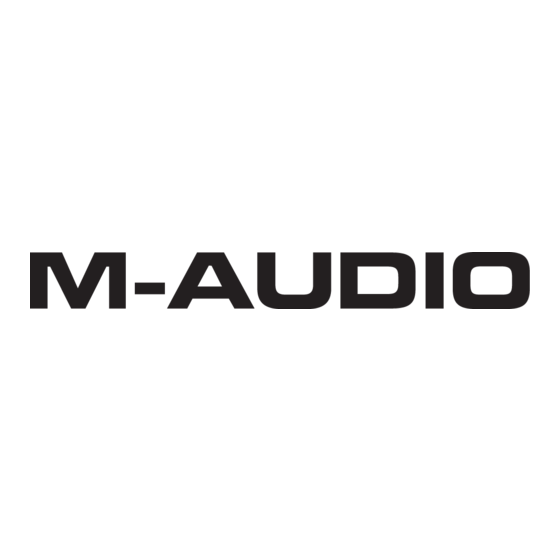
Table of Contents
Advertisement
Quick Links
English
Basic concept
The GT Player application is a software-based effect processor specially designed for guitar players for live performance.
GT Player has one main rack unit (window) that functions as an Effect processor and two optional rack units, Track Player and ReWire Player, that
act as players.
The Effect processor comes with essential guitar effects and a couple of designed sound setups that can be used right away. In addition, there is
the GT Player VST* Plug-In that can be useful for sound engineers and composers when used with other applications.
Effect processor usage is based on user-editable programs saved under specific number. Each program can contain any combination of supported
VST effects and VSTi instruments.
Every GT Player program contains its name and information about included effects and their settings (selected preset, parameter values, position
of editors, effect status) together with MIDI parameter mapping and program input/output levels. You can quickly browse through prepared
programs and load them when necessary.
Thanks to real-time processing with low latency, the results may sound similar to hardware guitar effect processors. With the use of optional
players, MIDI automation and other program features, this application offers a wide spectrum of possible setups and arrangements.
*VST: Virtual Studio Technology, a flexible system of software based audio effects and musical instruments developed by Steinberg Media A.G.
About this version
GT Player Express is a special streamlined version for M-Audio users. It features effects and a number of programs, tracks and more.
You can upgrade to full version of GT/RT Player, featuring more effects, programs, and tracks.
For more information please visit:
http://www.DSound1.com web or contact your distributor.
Before you start
Even though it's quite easy to get started with GT Player, we recommend that you setup your audio and MIDI first, and ensure that you have all
necessary.
To learn about the basic functionality of each control, simply allow your mouse cursor to hover above each control; a description will soon
appear.
Many of features and properties can be set in Program Preferences. To open the Preferences dialog, click the Options button and select Preferences
from the menu.
NOTE: The Mac and PC versions of GT Player Express are almost identical. The most important differences are mentioned in the text next to
the system logos.
Requirements
Software and hardware requirements:
Computer running Windows XP or Mac OS X operating system or newer
<
Audio card with low latency ASIO (Windows XP) or Core Audio-compatible driver (Mac OS X)
<
Headphones or amplifier with speakers
<
MIDI foot/remote controller and/or MIDI keyboard
<
Electric or acoustic guitar, microphone or another source of audio signal
<
NOTE: For a guitar without active electronics, the best sound is achieved when using high impedance inputs (also called hi-Z or instrument
inputs). Please, consult the User's Manual for your audio card to find how to connect various types of audio signal.
3
Advertisement
Table of Contents

Summary of Contents for M-Audio GT Player Express
-
Page 1: Software And Hardware Requirements
Many of features and properties can be set in Program Preferences. To open the Preferences dialog, click the Options button and select Preferences from the menu. NOTE: The Mac and PC versions of GT Player Express are almost identical. The most important differences are mentioned in the text next to the system logos. - Page 2 Windows: Select the device driver of your audio card from the Device selector (e.g. M-Audio JamLab). Then select the required Sample rate (frequency) from the list of supported rates. For most cases, a sample rate of 44.1kHz or 48kHz is recommended.
- Page 3 MIDI setup One of GT Player Express’ strongest features is its ability to control almost everything via MIDI. The MIDI pane in the Preferences window allows you to set options for MIDI control, (e.g. MIDI Input, Output for MIDI Thru, MIDI Channels on which you want to receive control data, what to do if MIDI program changes are received, Default tempo for instruments, and more).
- Page 4 Selects Program for further action. preset. To get started with GT Player Express, select any prepared program by pressing the UP/DOWN arrows or turning the data wheel in the Program mode and pressing the LOAD button. The Program can also be quickly loaded by pressing the shortcut key (see Keyboard control), or when MIDI Program Change is received.
- Page 5 For effect editors, you may utilize the Mac OS X dock by clicking the DOCK button. < GT Player Express can show the level of the input and output signal in dock, which is useful when it is in the background and <...
- Page 6 Track Player Track Player is audio file player and recorder. You can create playlist of your favorite tracks that can be played along with your live performance. With integrated time-stretching, it is also a great tool for training. Click the PLAYLIST button on the Track Player to open Playlist editor. Click ADD to add files to the playlist. To change the order of audio files in the playlist, select one or more tracks and press the MOVE UP or MOVE DOWN button.
- Page 7 Master or slave - depending on whether or not any ReWire master is running (e.g. Ableton Live) < GT Player Express ReWire Player works as a ReWire master so it mixes audio from ReWire slaves with your live performance. To use ReWire Player you need a ReWire-compatible slave application installed on your system.
- Page 8 Keyboard control Many of the rack control functions and other special actions are accessible via your computer keyboard. Here are some important shortcuts that are not listed in the menus: Keys and modifiers Active rack unit Action Numpad / Activate next rack unit Q,W,E,R,T,Y,U,I,O,P Generate MIDI notes c2-e3 2,3,5,6,7,9,0...








Need help?
Do you have a question about the GT Player Express and is the answer not in the manual?
Questions and answers